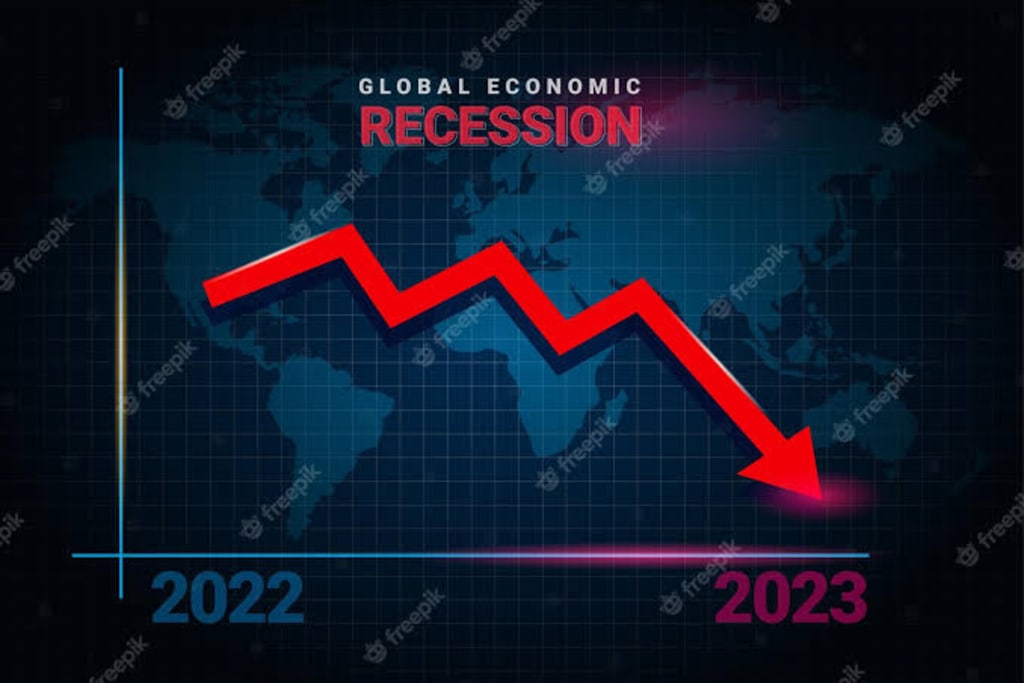Global Economic Crisis 2023
Economic crisis

It was the year 2023, and the world was in the midst of an economic crisis that was shaking the very foundations of modern society. The cause was a combination of factors, including political unrest, resource depletion, and a series of natural disasters that had caused widespread damage to infrastructure and commerce.
The crisis began in earnest when several major economies experienced a sudden and unexpected downturn. Unemployment skyrocketed, businesses closed their doors, and governments struggled to maintain public services amidst dwindling tax revenues.
At first, the crisis was seen as a temporary blip on the radar, something that could be easily managed with a combination of austerity measures and monetary policy. But as time passed, it became clear that the situation was far more serious than anyone had anticipated.
As the crisis deepened, countries around the world began to enact protectionist policies, erecting barriers to trade and investment in an effort to protect their own economies. This only served to exacerbate the situation, as global markets became increasingly disconnected and countries began to hoard resources and capital.
The situation soon spiraled out of control, with protests and riots breaking out in many major cities as people struggled to make ends meet. The divide between the haves and have-nots grew wider, with the wealthy retreating into gated communities and private enclaves while the rest of the world burned.
In the midst of this chaos, a small group of economists and policymakers began to coalesce around a radical new idea. They proposed a global currency, backed by a basket of commodities and resources, that would serve as a neutral unit of exchange in a world that had become hopelessly fragmented.
The idea was initially met with skepticism, but as the crisis continued to worsen, more and more people began to see it as the only viable solution. In a series of tense negotiations, representatives from the world's major economies hammered out the details of the new currency, dubbed the Global Reserve Note (GRN).
At first, the rollout of the GRN was rocky. Many countries were hesitant to adopt a currency that was not backed by their own central banks, and there were concerns about how the new system would be regulated and enforced.
But over time, the GRN began to gain traction. As more and more countries signed on, the currency gained in stability and value, and a new era of global cooperation began to take shape.
Of course, the transition was not without its challenges. Many industries and businesses were disrupted by the shift to a new currency regime, and there were concerns about the loss of national sovereignty and control over monetary policy.
But in the end, the benefits of a global currency proved too great to ignore. With the world economy once again on stable footing, people around the world breathed a collective sigh of relief, grateful for the vision and determination of those who had worked so hard to create a new system that would help to prevent another crisis from happening in the future.
As the Global Reserve Note (GRN) gained acceptance and trust, it became the new standard of global trade and commerce. The GRN's basket of commodities and resources provided a stable backing that was less vulnerable to the fluctuations of any single currency or commodity.
The GRN was managed by a newly established global central bank, which oversaw the currency's supply, demand, and exchange rate. The central bank was also tasked with enforcing regulations and preventing fraud and corruption within the new monetary system.
Over time, countries that had initially been hesitant to adopt the GRN began to see the benefits of the new system. International trade became more efficient and transparent, and businesses could easily conduct transactions across borders without the need for complex currency conversions and fees.
The GRN also helped to mitigate some of the worst effects of the economic crisis. By providing a stable unit of exchange, the currency helped to smooth out fluctuations in global markets and prevent further shocks to the world economy.
But the GRN was not a perfect solution. Many countries still struggled with the fallout from the economic crisis, and there were concerns about the loss of national control over monetary policy. There were also debates about how to balance the needs of individual nations with the broader imperatives of global economic stability.
Despite these challenges, the GRN remained a central pillar of the new global order. In the years that followed, the world economy began to recover, as countries worked together to build a more resilient and sustainable economic system.
But the lessons of the crisis remained fresh in people's minds. Governments and businesses alike became more cautious and more attuned to the risks of global economic instability. And while there were still occasional bumps in the road, the world economy continued to grow and evolve, driven by innovation, creativity, and a shared commitment to building a better future for all





Comments
There are no comments for this story
Be the first to respond and start the conversation.